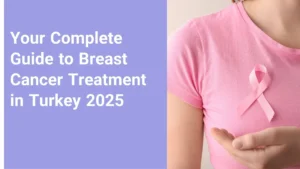Modern Hair Transplant (FUT, DHI, PRP): A Complete Guide for International Patients
Your definitive resource for understanding hair restoration options and planning your journey abroad.
Hair loss can significantly impact self-confidence, but thankfully, modern medicine offers highly effective solutions. A hair transplant is more than just a cosmetic procedure; it’s a life-changing journey toward regaining your natural appearance and confidence. Consequently, this guide focuses on the most advanced techniques—FUT, DHI, and PRP—providing essential information for international patients considering medical travel for their procedure. Furthermore, we’ll help you understand what to expect, from preparation to recovery, ensuring a smooth and successful experience.
The Foundation of Hair Transplants: Understanding the Basics
Before diving into specific techniques, it’s crucial to grasp the core principle of a hair transplant. Essentially, the procedure involves harvesting healthy hair follicles from a donor area (typically the back or sides of the head) and implanting them into a bald or thinning area. This process, known as follicular unit transplantation, uses follicles that are genetically resistant to balding. As a result, the transplanted hair continues to grow naturally and permanently. Therefore, this foundational concept is key to the success of all modern hair restoration methods.
The Three Pillars of Hair Restoration: FUT, FUE, and DHI
The landscape of hair transplantation has evolved dramatically. Consequently, surgeons can now choose from various methods tailored to individual needs. The two primary methods, for instance, are Follicular Unit Transplantation (FUT) and Follicular Unit Excision (FUE). In addition, DHI, or Direct Hair Implantation, is a specialized variation of the FUE method. Clearly, each technique has its own advantages, suitable for different types of hair loss and patient goals.
To begin with, FUT is often chosen for patients needing a large number of grafts. By comparison, FUE is popular for its minimally invasive nature and faster recovery. Meanwhile, DHI is favored for its precision and density, especially in specific areas. Understanding these differences is, therefore, key to making an informed decision. Furthermore, modern clinics often combine these methods with supplementary treatments like PRP to maximize results.
Follicular Unit Transplantation (FUT): The Strip Method
FUT, also known as the strip method, is a time-tested and reliable technique. During this procedure, a surgeon removes a small strip of tissue from the donor area. This strip is then meticulously dissected into individual follicular units under a microscope. Finally, these units are carefully transplanted into the recipient sites. In fact, FUT is known for its ability to harvest a large number of grafts in a single session, making it ideal for extensive hair loss. Its efficiency, moreover, makes it a cost-effective option for many patients.
Advantages and Disadvantages of FUT
One of the main benefits of FUT is the high graft yield, which is excellent for covering large bald areas. Moreover, since the follicles are harvested from a single strip, the quality of the grafts is often very high. However, a key drawback is the linear scar left on the donor area. Although modern suturing techniques make the scar less noticeable, it may still be visible if you choose to wear your hair very short. This is an important consideration for many patients, in contrast to FUE or DHI methods.
Follicular Unit Excision (FUE): The Gold Standard
FUE is arguably the most popular hair transplant method today. Instead of a strip, the surgeon uses a micro-punch tool to individually extract follicular units directly from the donor area. These tiny punches create small, circular scars that are virtually invisible, especially with short hair. The harvested follicles are then implanted into the recipient area using specialized tools. This method is, therefore, praised for its minimal invasiveness and quicker recovery time.
The FUE Procedure: What to Expect
The FUE procedure is a meticulous process that can take several hours, depending on the number of grafts. First, the donor area is trimmed and locally anesthetized. Then, the surgeon extracts the follicles one by one. Subsequently, small incisions are made in the recipient area, and the grafts are implanted. Because of the nature of the procedure, a skilled surgeon is essential to ensure a high graft survival rate and natural-looking results. In conclusion, many clinics, including wmedtour.com, employ highly experienced professionals to perform this delicate work.
Direct Hair Implantation (DHI): The Precision Method
DHI is an advanced variation of the FUE technique. The key difference lies in the implantation phase. Instead of making separate incisions before implanting, a special tool called the Choi Implanter Pen is used. This pen simultaneously creates the recipient site and implants the graft. In this way, it allows the surgeon to control the depth, angle, and direction of each implanted hair follicle with exceptional precision, leading to a denser and more natural-looking result.
Is DHI Right for You?
DHI is particularly effective for achieving high density in small areas, like the hairline or eyebrows. Because there is no need to pre-make incisions, it can also lead to less bleeding and quicker recovery. While it is a more time-consuming process, the results are often remarkably natural. However, it requires a highly trained and experienced team. In short, if your goal is a highly precise and dense result, DHI might be your best option.
The Role of Platelet-Rich Plasma (PRP) in Hair Restoration
PRP therapy is a powerful supplementary treatment often used in conjunction with a hair transplant. First, it involves drawing a small amount of the patient’s blood, which is then processed to concentrate the platelets. This platelet-rich plasma is rich in growth factors that, when injected into the scalp, stimulate hair growth and accelerate healing. Furthermore, many surgeons use PRP during and after a hair transplant to improve graft survival rates and enhance overall hair density. For more information, you can explore detailed studies on the efficacy of PRP in hair restoration on websites like the National Center for Biotechnology Information.
Comparison Table: FUT vs. FUE vs. DHI
| Feature | FUT (Follicular Unit Transplantation) | FUE (Follicular Unit Excision) | DHI (Direct Hair Implantation) |
|---|---|---|---|
| Method | Strip harvesting from donor area | Individual follicle extraction | Individual follicle extraction and simultaneous implantation |
| Scarring | Linear scar in donor area | Micro-scars, nearly invisible | Micro-scars, nearly invisible |
| Graft Count | High (2,000-4,000+) | Medium to high (1,500-3,500) | Medium (1,500-2,500) |
| Recovery | Longer (10-14 days) | Shorter (5-7 days) | Fastest (3-5 days) |
| Best For | Extensive baldness, large area coverage | Most hair loss cases, patients who wear hair short | High-density hairline, precision, minimal invasiveness |
Ready to Transform Your Look?
Your journey to a full head of hair begins with a single step. For the best results and a personalized consultation, visit wmedtour.com today. Our team of experts is ready to guide you through every stage of your hair restoration process.
A Guide to Planning Your Hair Transplant as an International Patient
Embarking on a medical trip requires careful planning. First and foremost, you should choose a reputable clinic with a proven track record. Additionally, consider the clinic’s location, the qualifications of the surgeons, and the technology they use. In addition, a good clinic will also provide comprehensive support, including assistance with travel arrangements, accommodation, and a translator. You can, for instance, find useful information on medical tourism best practices on sites like Medical Tourism Association.
The Hair Transplant Journey: Step-by-Step
Your journey begins with an initial online consultation, where a specialist will assess your hair loss and recommend the best treatment. Next, you will plan your trip and receive pre-procedure instructions. The procedure itself usually takes one to three days, depending on the number of grafts. After the transplant, you will be given detailed aftercare instructions to ensure optimal healing. Following this, a long-term follow-up plan will be established to monitor your progress. This comprehensive approach is a hallmark of quality care. For example, WMedtour is a global hub portal that offers an all-inclusive package for international patients, from consultation to post-op care.
Post-Procedure Care and Recovery
Proper aftercare is just as important as the surgery itself. In the first few days, you should, therefore, avoid touching the transplanted area and follow the washing instructions provided by your clinic. It is also important to avoid strenuous activities and direct sunlight. In the first few weeks, some of the transplanted hair may shed, which is a normal part of the process. New hair growth typically begins around three to four months after the procedure, with full results visible in 9 to 12 months. For more detailed recovery tips, check out reputable health sites such as Mayo Clinic.
How to Maximize Your Results
To ensure the best outcome, it’s vital to follow your doctor’s advice meticulously. Moreover, consider supplementary treatments like PRP to boost hair growth. A balanced diet and a healthy lifestyle also contribute to the overall health of your hair. Remember, patience is key, and the final results are, therefore, worth the wait. In fact, a study published by the American Academy of Dermatology highlights the importance of post-procedure care for long-term success.



